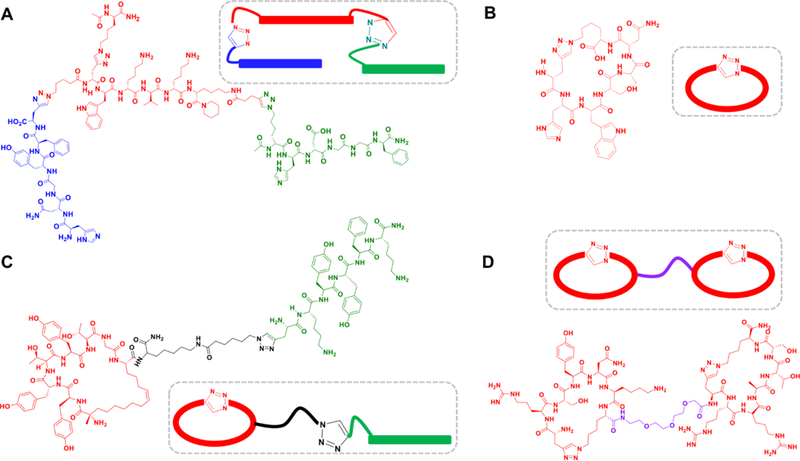Figure 1.

Examples of PCCs developed through chemical epitope targeting. The individual colored components of the PCCs are developed separately. Red: 1° (initial anchor) ligand, Green: 2° ligand, Blue: 3° ligand (A) Linear triligand PCC against the C-terminal S474 epitope of Akt2. The 1° ligand was developed through chemical epitope targeting, while the 2° and 3° components were identified through iterative in situ click screening steps. (B) Macrocyclic PCC developed against the lactate dehydrogenase biomarker for Plasmodium falciparum. (C) Biligand PCC against human Akt2 that contains a macrocyclic anchor ligand and a linear 2° ligand. (D) Biligand that cooperatively binds interleukin-17F comprised of two macrocyclic anchor peptides separately developed against adjacent epitopes, and then connected with a 3 unit polyethylene glycol linker to optimize cooperative binding interactions.171
